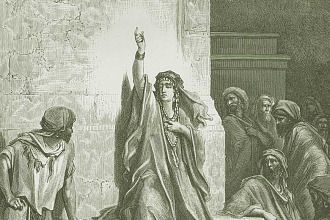Many Jews will celebrate the deliverance of the Jewish people from their certain deaths nearly 2,500 years ago on the holiday now known as Purim. It starts at sundown on March 23 and lasts until sundown March 24. This date coincides with the 14th day of Adar on the Hebrew lunar calendar.
Generally in modern times, this is a joyous, festive time of gift giving, charity, flashy costumes, and hamantashen appearing in bakeries worldwide, Purim accounts the Biblical Book of Esther.
In this historical account of divine intervention, a young Jewish woman in Shushan, Persia claimed victory in a beauty pageant bestowing upon her the honor of marrying the Persian king, Ahasuerus. The king, in an intoxicated state, decided to no longer be faithful to his current wife and the current Queen of Persia, Vashti. Thus, Esther replaced Vashti as queen on the Persian throne, but at the time, intentionally failed to inform her new husband of her Jewishness.
Meanwhile, Haman, the King’s not-so-trusty advisor, was seeking annihilation of the Jewish people. He somehow hoodwinked King Ahaseurus into agreeing to murder all the Jews in Shushan on the 14th day of Adar. Esther’s uncle, Mordechai, intercepted word of Haman’s plot, and pleaded with now Queen Esther to intervene on the behalf of her people.
Despite court rules and many other formalities that even a queen must endure in approaching the King, Esther defiantly took other radical steps to foil Haman’s plan. Ignoring the royal code of dos and don’ts and proper etiquette, she admitted her Jewish heritage to King Ahasuerus, noting that she herself would perish if Haman’s plan were allowed to proceed.
Ultimately, God workws through King Ahaseurus who intervened, and the Jewish people of Shushan were spared.
Rather than killing Mordechai, King Ahaseurus ordered the hanging of Haman for his crimes against the local Jewish humanity, and thus, Jews today celebrate the deliverance of the Jewish people from the fate of Haman in the festivities known as Purim, or Lots, today.

























